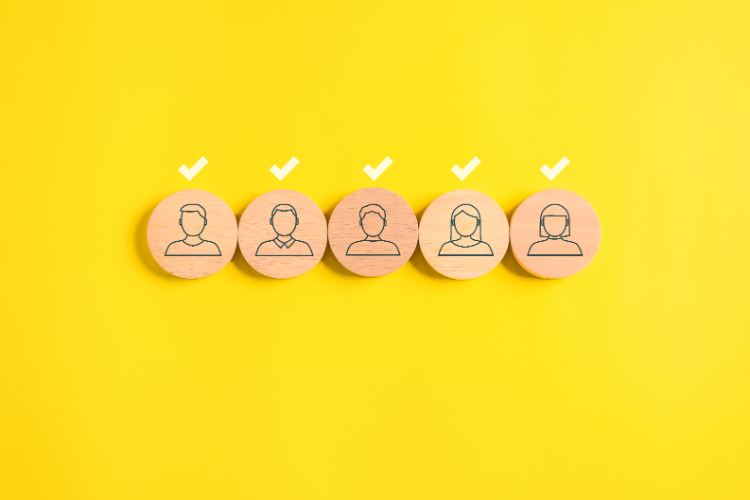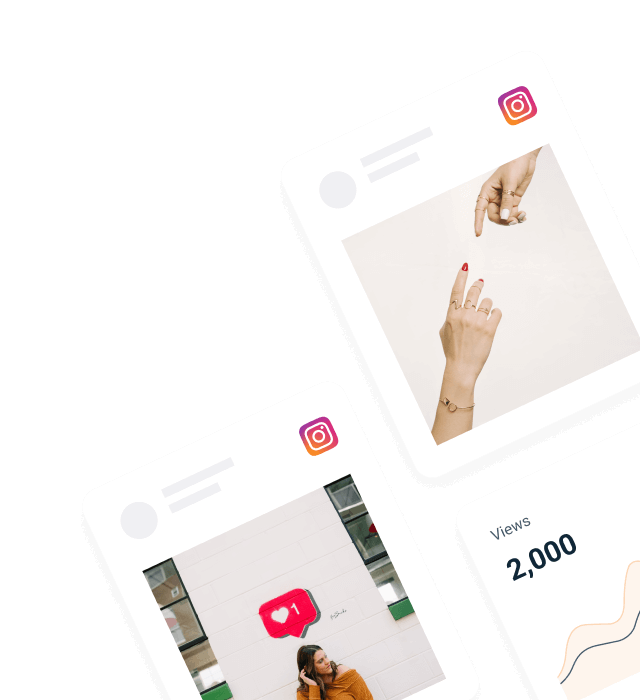Personal branding in B2B isn’t just a marketing strategy—it’s a business transformation approach that builds trust, credibility, and long-term relationships. In today’s competitive market, effective personal branding has become essential for B2B professionals seeking business growth.
B2B sales cycles often involve multiple stakeholders and extended decision-making processes. Personal branding allows business leaders to humanize their companies through authentic expertise and thought leadership. According to 2024 LinkedIn research, content from employees receives 8x more engagement than content from company pages. A strong personal brand creates trust and credibility that B2B buyers demand before making significant investments.
This guide reveals proven personal branding strategies for B2B professionals, complete with actionable techniques and real-world examples from successful industry leaders.
What is Personal Branding in B2B?

B2B personal branding is the intentional development and marketing of a business professional’s personal expertise, authority, and reputation to grow their business. B2B personal branding differs from business-to-consumer in that it prioritizes the human element, forming genuine relationships that impact buying decisions.
The primary distinction between B2B and B2C personal branding is approach and audience. Whereas B2C personal branding pursues mass popularity, B2B personal branding involves achieving high credibility among particular professional communities, establishing industry expertise, and developing the trust that is required for high-risk business relationships.
What are the Elements of Personal Branding in B2B?

Here’s what personal branding in B2B looks like:
- Thought leadership: publishing your thoughts and opinions on blogs, social media, or through public speaking enables you to establish yourself as someone who truly knows what they’re doing.
- Networking like a professional: it is all about establishing good relationships with other companies, partners, and clients. The stronger the network, the more business opportunities you attract.
- Building trust and credibility: people like to do business with someone they trust. If you are authentic, transparent, and consistent, you will be able to form long-lasting relationships that are mutually rewarding for you and your business.
- Creating valuable content: providing people with valuable information illustrates that you are knowledgeable and are there to help. Concentrate on developing high-quality content that shows expertise with high standards.
- Building social media presence: social media platforms like LinkedIn are the most important for B2B personal branding. You can share your achievements, engage with your network, showcase your knowledge, and unlock social selling possibilities.
- Consistency is key: make sure your personal brand aligns with your business values. You want people to trust you and your company as a package deal.
What are the Benefits of Personal Branding in B2B?

In competitive B2B markets, a solid personal brand can differentiate you. It shows what distinguishes you from others who sell the same products or services. The 2023 Edelman Trust Barometer states that 73% of potential buyers want company leaders to be actively engaged in communications. Here is why an excellent personal brand is essential for B2B sales and marketing strategy.
1. It Enhances Brand Credibility
A personal brand can add a lot of brand credibility by putting a human face to the business and developing more meaningful, genuine relationships. Individuals trust individuals more than nameless, faceless corporations. A personal brand that represents you and your values puts a face and personality to the company and makes it more identifiable and trustworthy.
When clients and partners trust you as a person, they’re more likely to be loyal to your business. That personal trust builds more resilient brand loyalty, especially crucial in B2B, where relationships drive long-term success.
2. It Helps You Build a Strong Brand Reputation
In most instances in B2B, trust in the individual translates to trust in the company. A strong personal brand can increase your company’s brand recognition and make it more appealing to potential customers.
When you, as an individual, are seen as credible, that credibility naturally extends to your company. If you’re regarded as a trustworthy expert, your business benefits from that positive reputation, attracting future customers and generating leads.
3. Personal Branding Builds Trust and Drives Sales
Trust is the foundation of every B2B transaction. A PWC survey revealed a striking disconnect: 90% of business executives believe customers trust their companies, while only 30% of consumers actually do. Personal branding bridges this trust gap by adding human authenticity to business relationships.
When you share both successes and failures transparently, you demonstrate genuine expertise and reliability. This authenticity doesn’t just build trust—it directly impacts your bottom line. B2B buyers are more likely to choose vendors they trust personally, making personal branding a powerful component of the sales process. Learn more about leveraging social proof for building customer trust.
4. It Helps Your Brand Stand Out
B2B markets are often crowded, with many businesses offering similar products or services. Differentiating yourself helps you get noticed and attract potential clients, especially if your value proposition is unique.
Personal branding allows individuals to showcase their expertise, values, and unique perspectives. When company leaders or employees have distinct personal brands, it can set the business apart from competitors who may be perceived as faceless corporations.
5. Personal Branding Improves Brand Loyalty

B2B sales cycles are often long and complex. Building brand loyalty leads to higher customer retention, reducing the need for repeated sales efforts. Loyal B2B clients often generate more revenue over time, as they are more likely to make larger purchases, upgrade services, or renew contracts, boosting customer lifetime value (CLV). Research from Harvard Business Review shows that increasing customer retention rates by just 5% can increase profits by 25% to 95%.
When a personal brand embodies transparency and authenticity, customers are more likely to trust the individual and, by extension, the brand. Trust is a key factor in brand loyalty, as consumers prefer doing business with companies they believe have integrity.
How to Build Your Personal Brand: Step-by-Step Implementation
Building a strong personal brand requires systematic execution. Follow this comprehensive approach to establish your personal branding marketing strategy:
Step 1: Platform Selection and Profile Optimization
Start by choosing your primary platform and optimizing your presence:
- Research your target audience: Identify where your ideal clients and partners spend their professional time online. Define specific audience segments to create content that generates leads
- Choose LinkedIn as your foundation: Establish your primary presence on the world’s largest professional network
-
Optimize your profile completely:
- Craft a compelling headline that includes your target keywords
- Write an engaging summary that speaks directly to your ideal clients
- Use a professional photo that reflects your brand personality
- Add a branded banner that reinforces your value proposition
- Complete all profile sections with relevant experience and skills
- Set up content tracking: Use LinkedIn analytics and other tools to monitor your progress from day one. Consider using LinkedIn for personal SEO to enhance your online visibility.
Step 2: Develop Your Content Strategy Framework
Create a systematic approach to content creation and distribution:
- Define your content pillars: Establish 3-4 core themes that represent your expertise areas
- Create a content calendar: Plan your posts in advance to ensure consistency and variety
- Develop your unique voice: Establish a tone and style that reflects your personality and resonates with your target audience
- Plan your content mix: Balance educational content, personal insights, industry commentary, and engagement posts. Review strategies for boosting content performance on LinkedIn to maximize your reach.
- Set posting frequency: Commit to a sustainable schedule (minimum 2-3 times per week for LinkedIn)
Content Creation Best Practices
To create valuable content that resonates with your target audience:
- Research thoroughly before sharing industry insights and industry trends
- Fact-check all statistics and cite credible sources
- Use professional formatting and maintain high-quality standards
- Include relevant visuals that enhance your message
- Provide actionable takeaways in every social media post
- Share your expertise through educational content that positions you as one of the industry leaders
Step 3: Execute Consistent Engagement Strategies
Build meaningful conversations through strategic engagement:
- Comment meaningfully: Add valuable insights through thoughtful comments rather than generic responses
- Share relevant posts: Regularly share content from industry peers with your own commentary
- Respond promptly: Reply to comments on your posts to foster authentic connections
- Start conversations: Ask questions in your posts to encourage meaningful discussions
- Join relevant groups: Participate actively on social platforms and professional communities
Leveraging Social Selling in Personal Branding
Social selling transforms your personal brand into a powerful component of the sales process:
Social Selling Fundamentals:
- Use your personal brand to warm up prospects before making sales contact
- Share valuable insights that solve your target audience’s challenges
- Build relationships first, then introduce business solutions naturally
- Share customer testimonials and social proof to establish credibility
- Follow up on engagement with personalized connection requests
Content Strategy for Social Selling:
- Share problem-solution posts that demonstrate your expertise
- Highlight successful client outcomes through case studies (with permission)
- Create educational series that position you as an industry expert
- Share industry predictions to demonstrate thought leadership
Personal Brand Measurement and Optimization
Track the effectiveness of your personal branding efforts through key metrics. According to LinkedIn research, professionals with strong personal brands receive significantly more connection requests and profile views:
- Engagement Quality: Measure meaningful conversations and connection requests from your target audience
- Inbound Opportunities: Track speaking invitations, collaboration requests, and business inquiries
- Network Growth: Monitor the quality and relevance of new connections and followers
Personal Branding Strategy Examples

Understanding how successful personal branding marketing strategy works helps you implement these concepts in your own B2B context. Here are three proven approaches that demonstrate different ways to build authority and drive business results.
The Thought Leadership Approach
Focus on building thought leadership in the guise of data-driven insights and industry predictions. Offer valuable information in a mix of 60% industry insights, 25% practical tutorials, and 15% behind-the-scenes details. This approach to storytelling builds real connections with your target audience while positioning you as one of the industry thought leaders.
Results: Most professionals who utilize this methodology experience 300-400% lifts in inbound leads and obtain multiple speaking opportunities based on personal brand awareness.
The Problem-Solver Framework
Make your focus finding and resolving particular pain points in your niche industry. Put emphasis on case studies, problem-solving methodologies, and step-by-step solutions that assist your audience in resolving difficulties. Offer actionable solutions always and share successes and failures openly.
Results: This approach has a tendency to generate quality follower growth and yields leads through warm inbound relationships, with higher close rates for deals that are originated through personal brand interactions.
The Authentic Storyteller Method
Use personal anecdotes and real storytelling to build deeper-level connections with prospects. Every posting embraces a personal anecdote associated with business lessons, which leads the customers to trust your credibility and authenticity.
B2B Personal Branding Examples
Now, let’s consider a few real-world examples of professionals who’ve applied these techniques successfully. These examples demonstrate a number of different ways of creating a strong personal brand that delivers business results.
1. Emmet Gibney
Emmet Gibney is the CEO of Rewardful, an affiliate marketing software primarily for SaaS businesses. He regularly shares tips on affiliate management, affiliate recruitment, and related topics on LinkedIn.
These topics help him connect with the audience, position Rewardful as a potential solution to their pain points, and build brand awareness. Here’s a sample post.
2. Peter Caputa
Peter Caputa is the CEO of Databox, a custom dashboard tool that does marketing reporting. He’s built a very active LinkedIn following by sharing marketing tactics and learnings from scaling a profitable, bootstrapped business.
These posts attract lots of attention and engagement, often translating into leads and revenue opportunities for the business. Here’s a sample post.
3. Neil Patel
Neil Patel is the co-founder of Neil Patel Digital, a multi-award-winning digital marketing agency for businesses. Neil Patel’s personal brand is about providing value, day in and day out. He provides actionable marketing and SEO tips, typically backed by either data or personal experience.
Neil’s focus is on educational and practical content, and his personal brand reflects that. It’s there to support his mission, not to overpower it. He frequently engages with his audience through comments and personalized advice, and in that, doubles down on demonstrating his expertise and willingness to help. Here’s a sample post.
Amplify Your Personal Brand Beyond LinkedIn
LinkedIn is perfect for establishing a B2B personal brand, but you shouldn’t stop there. To get the most out of your reach and leverage your posts across a variety of touchpoints, think about expanding your presence outside of one platform.
Using a LinkedIn aggregator such as Juicer enables you to showcase your content right on your website. This provides further exposure for your quality content and keeps your personal brand in front of your target market wherever they interact with your business. Your website visitors can see your posts without having to leave your site, providing continuity that helps cement your expertise and credibility. This multi-platform approach helps in developing credibility, building trust with prospects, and maintaining continuity of brand awareness across all online interactions.
Want to learn more about Juicer’s features for personal branding? Try Juicer’s LinkedIn aggregator for free.




